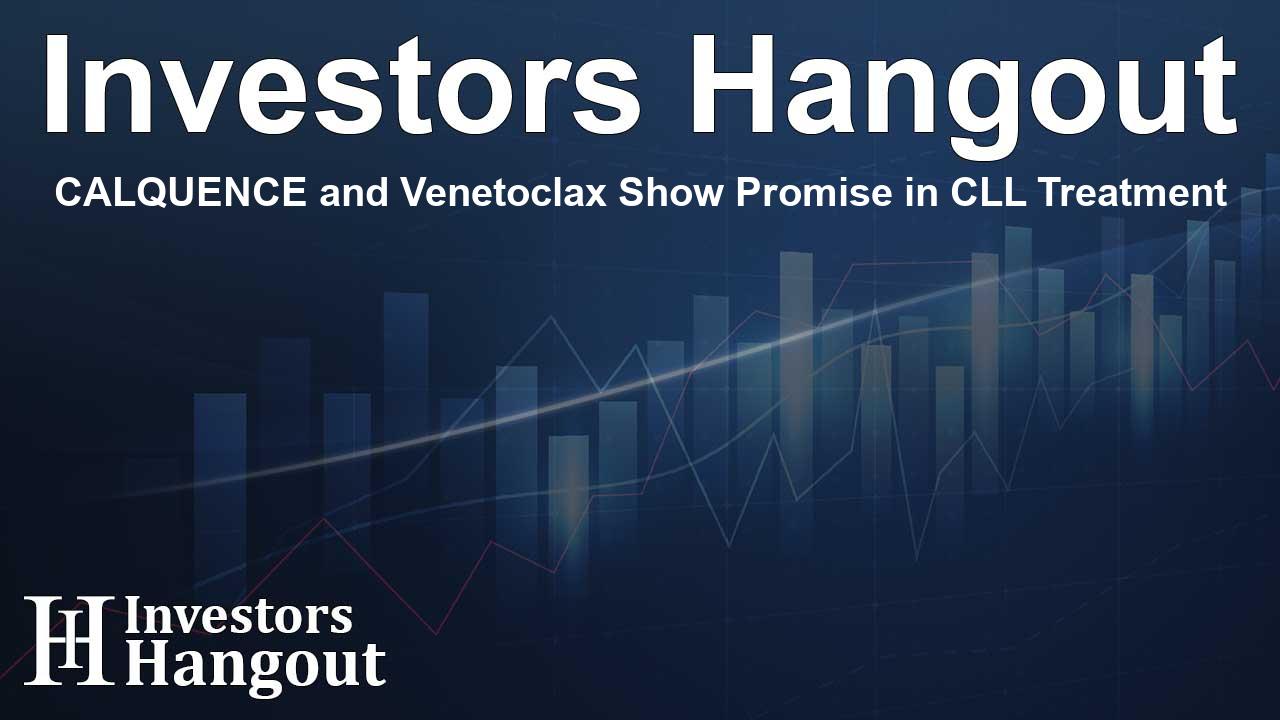CALQUENCE and Venetoclax Show Promise in CLL Treatment

CALQUENCE plus Venetoclax in CLL Treatment
AstraZeneca's CALQUENCE (acalabrutinib), in combination with venetoclax, has produced encouraging results in the treatment of chronic lymphocytic leukemia (CLL), according to findings from the AMPLIFY Phase III trial. This trial investigated the effectiveness of this therapy in previously untreated patients, presenting a clinically meaningful improvement in progression-free survival (PFS) when compared to standard chemoimmunotherapy protocols.
Key Findings from the AMPLIFY Trial
Results from the trial revealed that at a median follow-up of 41 months, patients receiving CALQUENCE plus venetoclax experienced a 35% lower risk of disease progression or mortality than those treated with traditional chemoimmunotherapy. Impressively, CALQUENCE plus venetoclax administered with obinutuzumab showed a staggering 58% reduction in risk, emphasizing the potential of these new combinations.
Despite not reaching a median PFS for the experimental groups, the median PFS for the control arm remained at 47.6 months. These findings highlight the potential benefit of an all-oral and fixed-duration treatment regimen for CLL patients, enabling them to take breaks from therapy and minimize long-term side effects.
Statements from Experts
Dr. Jennifer R. Brown, a leading expert and principal investigator for the study, noted that CLL is viewed as an incurable condition, and managing long-term effects from treatments is crucial. She stated, “The AMPLIFY results indicate a promising future with new treatment approaches that empower patients to have better quality of life alongside their treatment.”
Furthermore, Susan Galbraith, Executive Vice President of Oncology R&D at AstraZeneca, emphasized that these positive findings mark CALQUENCE as the only second-generation BTK inhibitor validated for frontline CLL therapy, further broadening treatment options for patients and healthcare providers.
Comparative Efficacy of CALQUENCE and Standard Care
The trial demonstrated impressive PFS rates with CALQUENCE combinations, boasting 76.5% at 36 months for CALQUENCE plus venetoclax and an impressive 83.1% when combined with obinutuzumab, compared to 66.5% for traditional treatment regimens. The overall response rate (ORR) also reflected well on these combinations, achieving 92.8% for CALQUENCE plus venetoclax alone and 92.7% with the addition of obinutuzumab.
Safety and Tolerability Profile
The safety outcomes appeared consistent with known profiles for CALQUENCE, with no new safety concerns arising. However, advanced adverse events occurred in a significant portion of treated individuals. Neutropenia was the most common severe side effect across all treatment arms, demonstrating the need for careful monitoring during therapy.
Interestingly, the study also noted a low incidence of tumor lysis syndrome in the CALQUENCE treatment arms, suggesting a better safety margin for patients undergoing this regimen in comparison to traditional treatments.
Global Context and Approvals
CALQUENCE has been embraced in various regions as a treatment for CLL and small lymphocytic lymphoma (SLL), with over 85,000 patients treated globally. This second-generation BTK inhibitor offers a promising pathway for those battling CLL.
Looking Ahead
As AstraZeneca continues its exploration in the field of hematology, the developments from AMPLIFY are expected to enhance the landscape of CLL treatment, creating opportunities for personalized therapy and improved patient outcomes. Additionally, the ongoing evaluation of CALQUENCE across several malignancies reflects the company's commitment to tackling challenging conditions within oncology.
Frequently Asked Questions
What is CALQUENCE and how does it work?
CALQUENCE is a Bruton tyrosine kinase (BTK) inhibitor designed to treat adult patients with chronic lymphocytic leukemia (CLL) or small lymphocytic lymphoma (SLL) by inhibiting growth signaling pathways in B-cells.
Why is the AMPLIFY trial significant?
The AMPLIFY trial is significant as it demonstrates the efficacy of CALQUENCE combined with venetoclax for untreated CLL patients, showcasing improved progression-free survival compared to conventional therapies.
What were the main findings regarding safety in the AMPLIFY trial?
The safety profile of CALQUENCE was consistent with previous knowledge, with notable adverse effects including neutropenia, observed in a significant percentage of patients treated with CALQUENCE-based regimens.
How does CALQUENCE compare with traditional CLL treatments?
CALQUENCE, especially in combination with venetoclax, shows considerably improved efficacy in terms of progression-free survival and overall response rates versus standard chemoimmunotherapy.
What impact does this research have on future CLL therapies?
This research supports ongoing innovation in CLL treatment strategies, advocating for the integration of modern, fixed-duration therapies to enhance patient quality of life and treatment outcomes.
About The Author
Contact Lucas Young privately here. Or send an email with ATTN: Lucas Young as the subject to contact@investorshangout.com.
About Investors Hangout
Investors Hangout is a leading online stock forum for financial discussion and learning, offering a wide range of free tools and resources. It draws in traders of all levels, who exchange market knowledge, investigate trading tactics, and keep an eye on industry developments in real time. Featuring financial articles, stock message boards, quotes, charts, company profiles, and live news updates. Through cooperative learning and a wealth of informational resources, it helps users from novices creating their first portfolios to experts honing their techniques. Join Investors Hangout today: https://investorshangout.com/
The content of this article is based on factual, publicly available information and does not represent legal, financial, or investment advice. Investors Hangout does not offer financial advice, and the author is not a licensed financial advisor. Consult a qualified advisor before making any financial or investment decisions based on this article. This article should not be considered advice to purchase, sell, or hold any securities or other investments. If any of the material provided here is inaccurate, please contact us for corrections.
